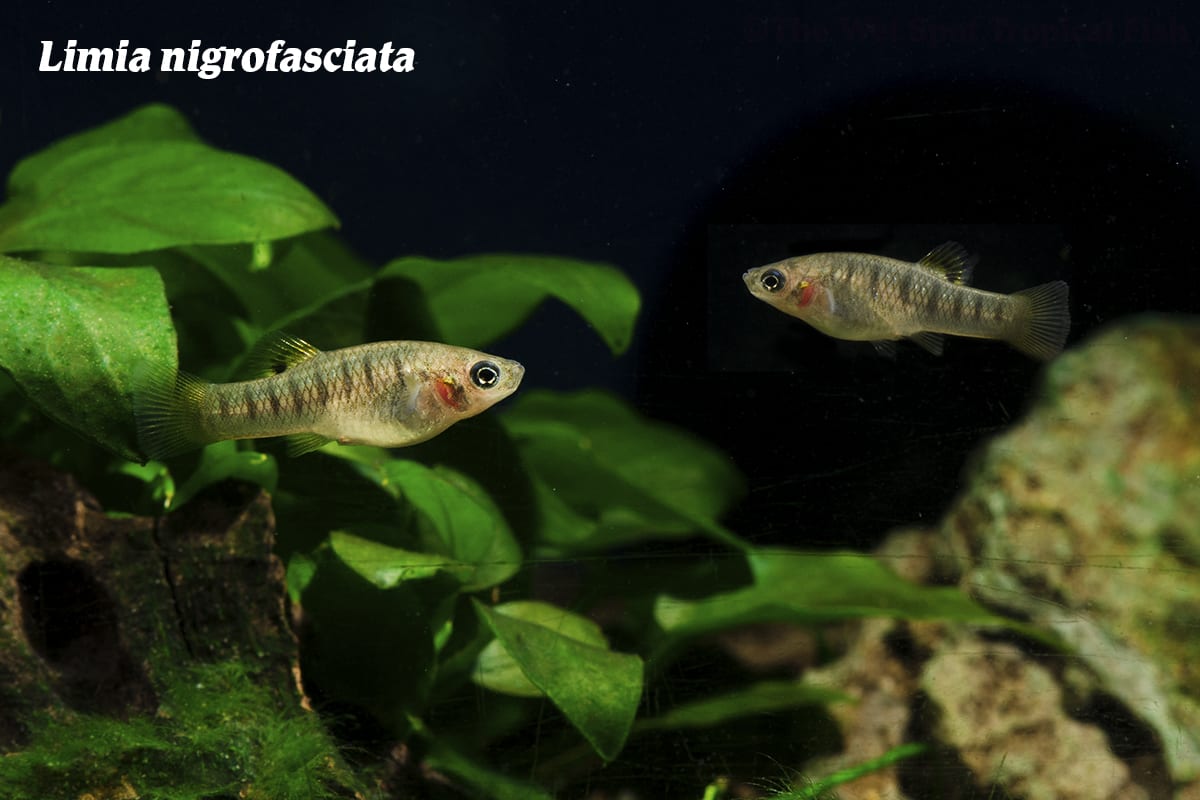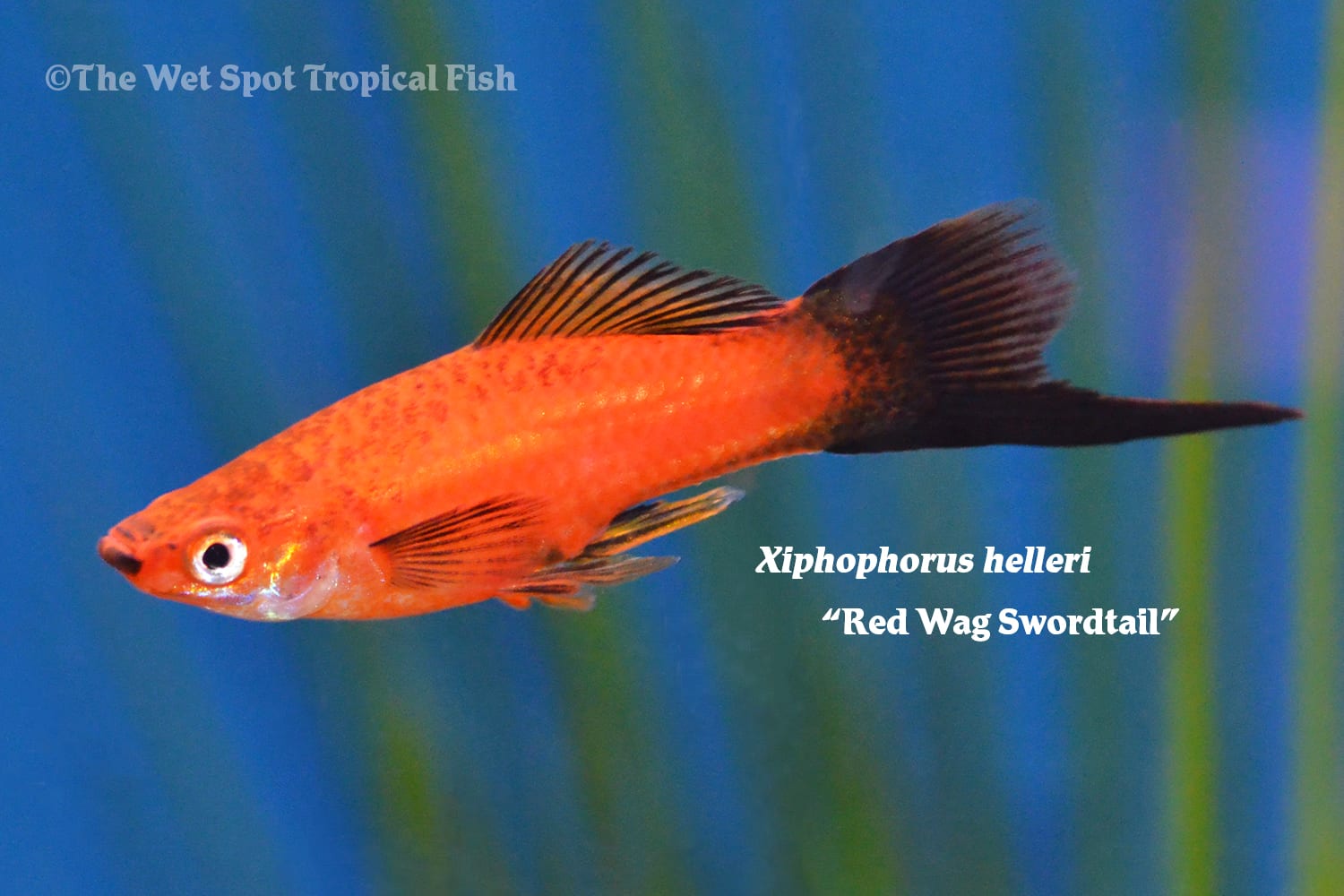Mother Roes Best
Mother Roes Best
Animals have been laying eggs for 600 million years (check it out!), and by all accounts, it’s a great strategy. Females can lay so many eggs that surely, at least some of her offspring will survive. But, quantity does not always mean quality. Even among our fishy ancestors, good mother arose, making sacrifices to ensure the well-being of their progeny. Livebearing fish, or simply “livebearers” are ovoviviparous, retaining eggs inside their bodies for development, and eventually giving birth to free-swimming young with low mortality rates. In honor of all the moms out there on Mother’s Day weekend, The Wet Spot presents: Ameca splendens, Limia nigrofasciata, and Xiphophorus hellerii.
Scientific NameAmeca splendens
Common NameButterfly Goodeid
Temperature / pH75°F / 7.0 to 8.0 pH
Native LocationMexico
Preferred DietOmnivorous
Named for its origin of discovery in the Rio Ameca drainage basin of Mexico, A. splendens is a lovely goodeid inhabiting clear springs with dense vegetation. Known more commonly as the “Butterfly Goodeid”, they reach a maximum of 3.5 inches in length, and exhibit shimmering bodies with butterfly-like black scales. Females are larger bodied than their more colorful counterparts, males showing a yellow-rimmed caudal fin. In aquaria, they do best in densely planted setups, and will show better coloration against dark substrate. Other furnishings are up to the aquarist’s preference, but they do need good quality filtration and high levels of oxygenation to thrive. Competitive eaters, and somewhat aggressive, they are not ideal for most community tanks. They can be kept with robust, similarly-sized species, though a species-only tank is recommended. These goodeids will breed happily as single pairs, or they can be kept in groups, and will “flock spawn”. Omnivorous and unfussy, they can be fed various dried flake and pellets, with both meaty and vegetal components. Tank waters are best maintained with temperatures around 75°F, pH between 7.0 and 8.0, and hardness of 179 to 357 ppm.
Scientific NameLimia nigrofasciata
Common NameBlack Barred Limia
Temperature / pH72 to 79°F / 7.0 to 8.0 pH
Native LocationHaiti/Dominican Republic
Preferred DietOmnivorous
Hailing from the family most common to aquarium livebearers, Poeciliidae, L. nigrofasciata is found in shallow, densely vegetated, brackish waters of Haiti and the Dominican Republic. This “Black-barred Limia” reaches just 2.5 inches in length and have silvery bodies with vertical black banding along their sides. Males are slightly smaller than the females and have darker banding, golden cheeks, and golden caudal fins. Hardy and a good fit for most aquaria, these limias prefer planted tanks with ample open swimming space. Shoaling by nature, they should be kept in groups of 6 or more, and can be housed alongside most other livebearers, hardy teras, loricariids, and cories. Another omnivorous and un-picky eater, be sure to feed varied diets of high-quality flake and pellets with vegetal components like spirulina or algae wafers. They will also accept fresh vegetable offerings when provided. Tank waters are best kept with temperatures of 72 to 79°F, pH of 7.0 to 8.0, and hardness between 178 and 445. If breeding, keep hardness on the higher end.
Scientific NameXiphophorus helleri
Common NameRed Wag Swordtail
Temperature / pH70 to 80°F / 6.0 to 8.0 pH
Native LocationCentral America
Preferred DietOmnivorous
Of the more extravagant livebearers, X. hellerii, or “Swordtails” are flashy cousins of platys. Native to many habitats throughout Central America, these fish thrive in a range of conditions from fast-flowing, rocky streams to quiet ponds. Swordtails reach about 3 inches in length and exhibit flattened, narrow bodies. Males sport the characteristic long-pointed tail resembling a sword. There are many morphs of swordtails, and 2 of our current favorites include “Red Wag” and “Neon”. Red wags are bright red in coloration with dark black tails, and neons are bright and golden with red fin accents, and a dark black ridge along the sword tail. Tank setups and furnishings are not critical for their well-being, though they look best in planted tanks with dark substrate. The addition of water-worn rocks, some water flow, and floating plants also seems to be appreciated. In smaller tanks, males tend to be territorial, but otherwise, this species can be kept in large groups where males will determine their own pecking order. At the very least, we recommend keeping them in female biased trios. Possible tank mates include other livebearers, danios, tetras, rainbowfish, plecos, or cories. Generalized omnivores, they will accept just about anything offered to them in aquaria. Make sure they have balanced diets with vegetal components, and regular supplementation of live and frozen fare. Tank waters are best kept with temperatures between 70 and 80°F, pH between 6.0 and 8.0, and hardness of 90 to 447 ppm.
On Mother’s Day, we hope you remembered to honor your mom by understanding the sacrifices she made simply bringing you here. If you didn’t -skip the flowers and get her some swimming mothers to relate to. At the very least, we encourage you to use this info as fodder for a handmade card. A word of advice: Hallmark very rarely does her justice- don’t make her “fish” for compliments.


